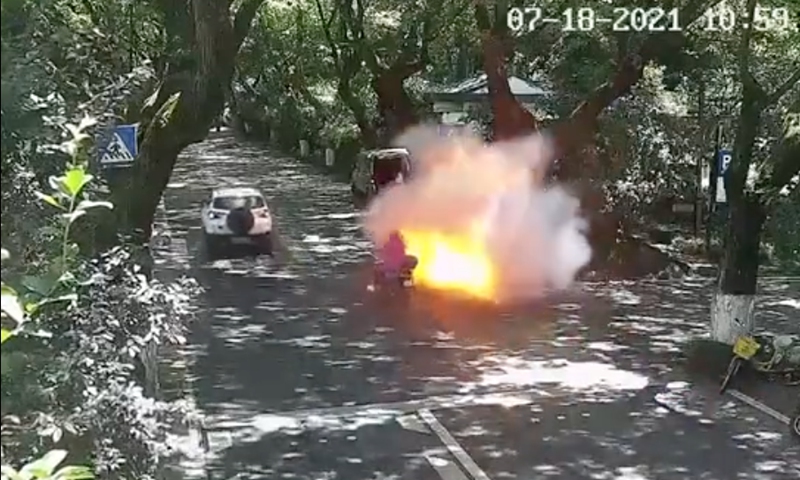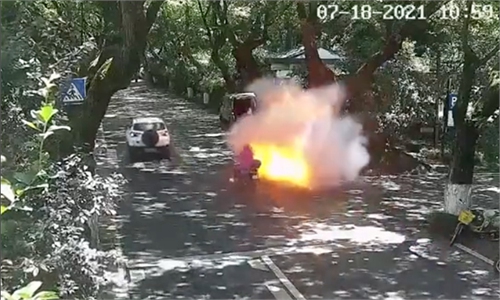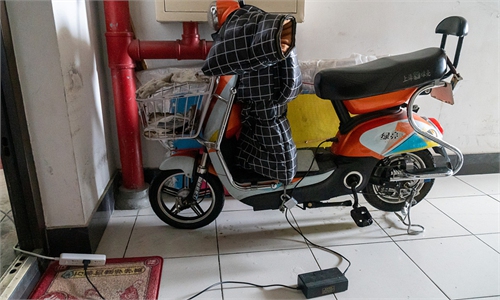Father and daughter burned in the electric bike spontaneously combustion still in critical danger

Screenshot from Sina Weibo
The father and daughter who were burned in the accident involving an electric bike that spontaneously combusted in Hangzhou, East China's Zhejiang Province are both still in an extremely critical condition, the hospitals where they are being treated revealed.
According to Han Chunmao, director of the Department of Burns of the Second Affiliated Hospital Zhejiang University School of Medicine where the father Wei Shengli is receiving treatment, over 90 percent of Wei's skin was burned when he was rushed to hospital and he is still in danger and receiving treatment to combat shock, including using a ventilator.
"His condition this morning was a bit more stable than yesterday and his consciousness is also clear," Han said during a press conference on Monday.
According to Han, burn patients will go through three stages to survive: the first shock stage, the second infection stage and the third stage of wound repair. The process will last from one and a half months to two months.
"The biggest difficulty is infection. After so many wounds were exposed, they could not be repaired in time," said Han, comparing the process to that of a tree; that is, once the bark of a tree is damaged, the tree would likely die.
Han also noted that there is a suspicious hematoma in his brain which his doctors are still observing.
Han could not give a specific cost needed to cover medical treatment fees that Wei needs since there are many variables in the entire treatment process for a burn patient. The amount can roll up to 1 million yuan ($154,357), Han noted.
Meanwhile, the daughter Wei Jiaqi who is being treated at the Children's Hospital, Zhejiang University School of Medicine is also in critical danger.
The burn area of her skin reached 95 percent and she underwent a tracheotomy and wound treatment when she was brought into the surgical intensive care unit (SICU) of the hospital.
According to media reports, the girl, who is also on a ventilator, was suffering from conditions including shock, acute respiratory distress syndrome, respiratory tract burn and aspiration pneumonia.
Han noted that it is more suitable for the girl to receive treatment at the children's hospital and his hospital would lend equipment for the treatment of the girl.
Global Times


